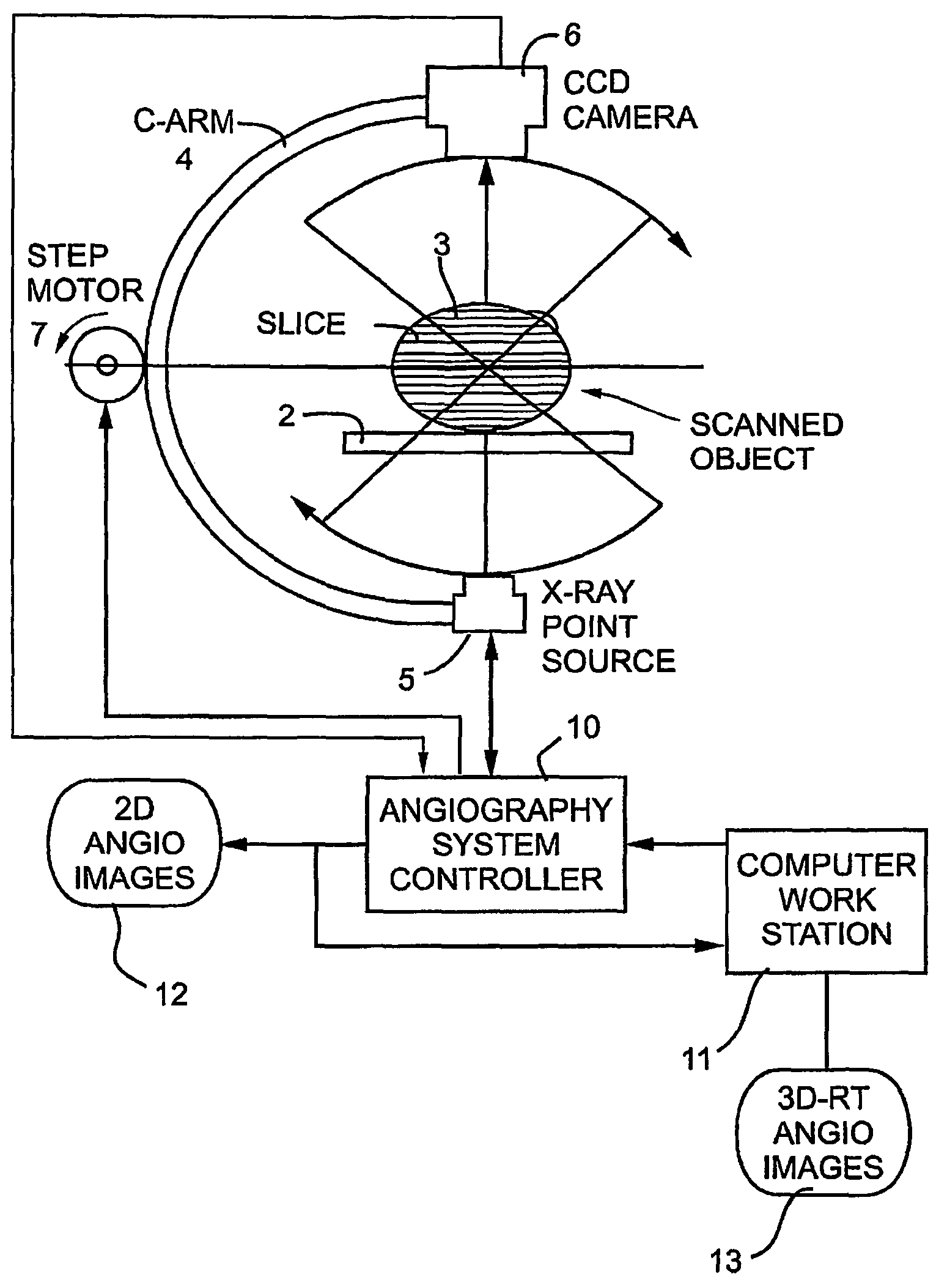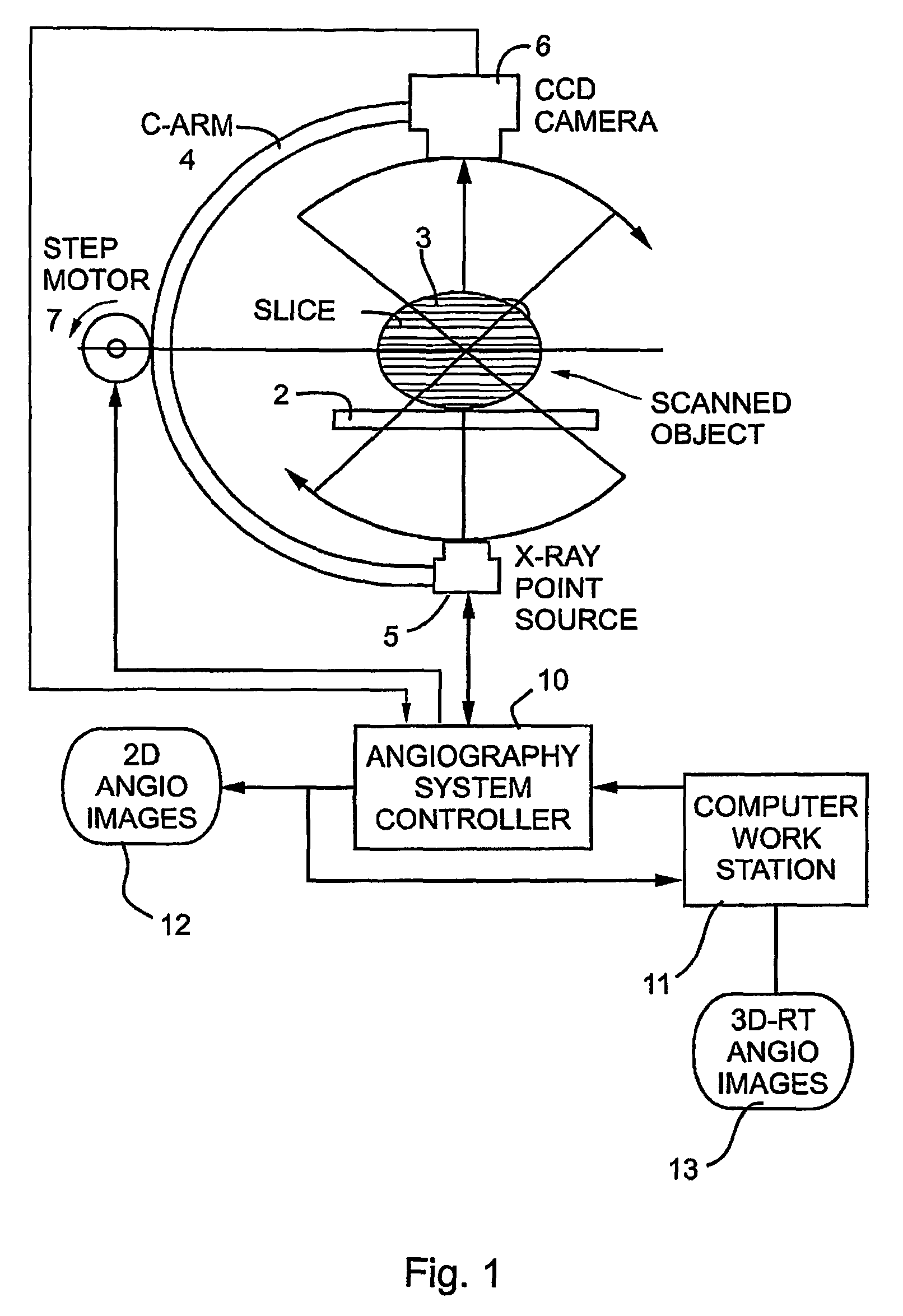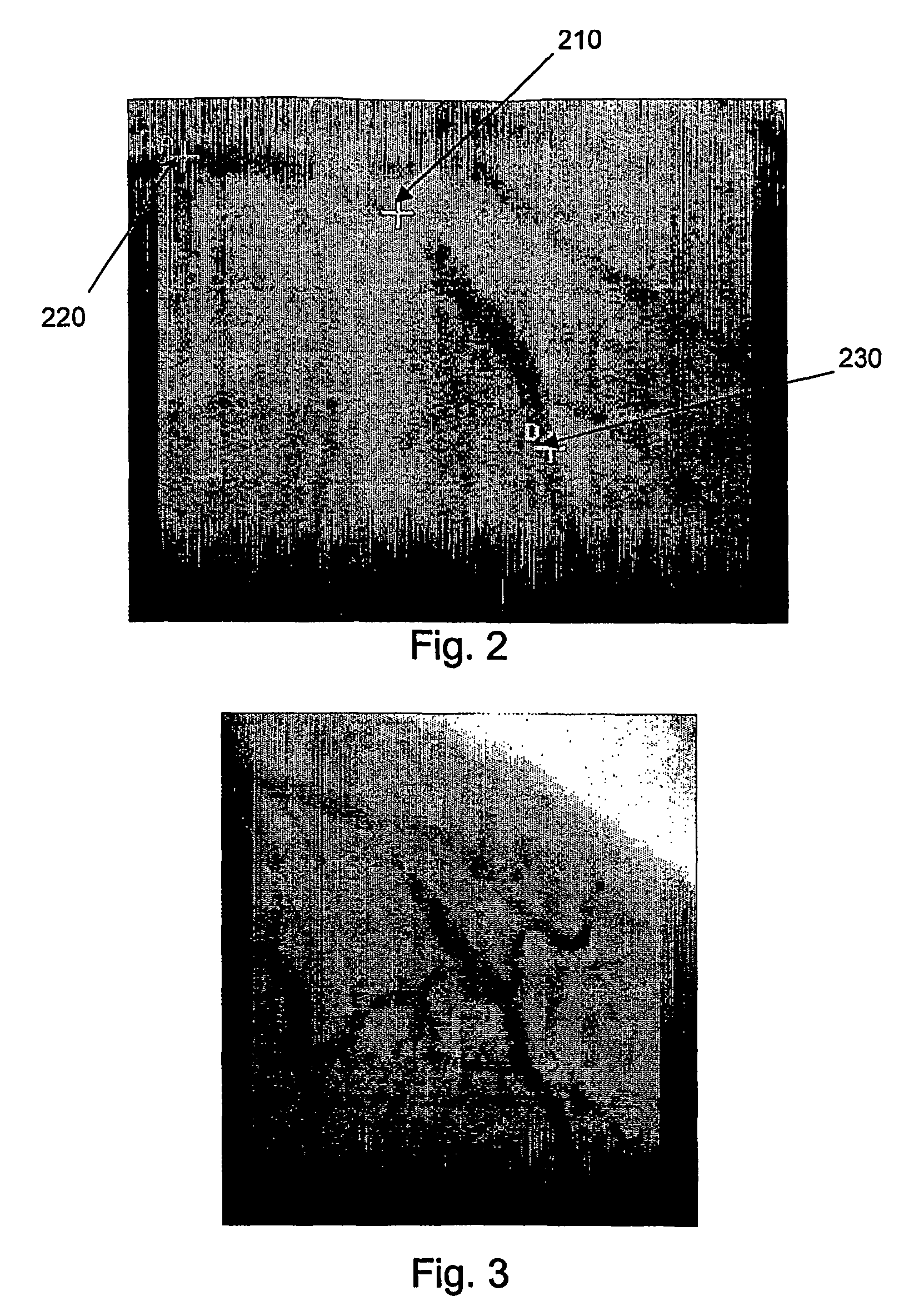System and method for three-dimensional reconstruction of a tubular organ
a three-dimensional reconstruction and tubular organ technology, applied in the field of medical imaging systems, can solve the problems of limited time, safety and cost, and the overall number of images that can be obtained is limited by time, safety and cost, and the estimation of stenosis severity is usually not accurate by either means
- Summary
- Abstract
- Description
- Claims
- Application Information
AI Technical Summary
Benefits of technology
Problems solved by technology
Method used
Image
Examples
Embodiment Construction
[0079]The embodiments of the present invention may be integrated into existing catheterization systems to produce both 2D and 3DR images. FIG. 1, for example, illustrates one exemplary system constructed in accordance with some embodiments of the present invention useful for producing either two-dimensional angiographs and / or 3DRs of a patient's vascular system. Such a system may include a horizontal support such as a table 2 for a patient 3 under examination, and a gantry C-arm 4 which encloses the patient's body. The C-arm supports a radiation source 5 at one side of the patient's body, and a radiation detector 6 at the opposite side and in alignment with the radiation source. The radiation source 5 may be an X-ray point source which produces, for example, a conical X-ray beam. The radiation detector, which may consist of a CCD camera having a plurality of radiation detector elements.
[0080]The apparatus may further include a step motor 7 for changing the angular position of the ra...
PUM
 Login to View More
Login to View More Abstract
Description
Claims
Application Information
 Login to View More
Login to View More - R&D
- Intellectual Property
- Life Sciences
- Materials
- Tech Scout
- Unparalleled Data Quality
- Higher Quality Content
- 60% Fewer Hallucinations
Browse by: Latest US Patents, China's latest patents, Technical Efficacy Thesaurus, Application Domain, Technology Topic, Popular Technical Reports.
© 2025 PatSnap. All rights reserved.Legal|Privacy policy|Modern Slavery Act Transparency Statement|Sitemap|About US| Contact US: help@patsnap.com



